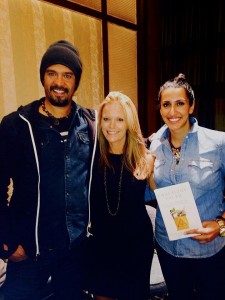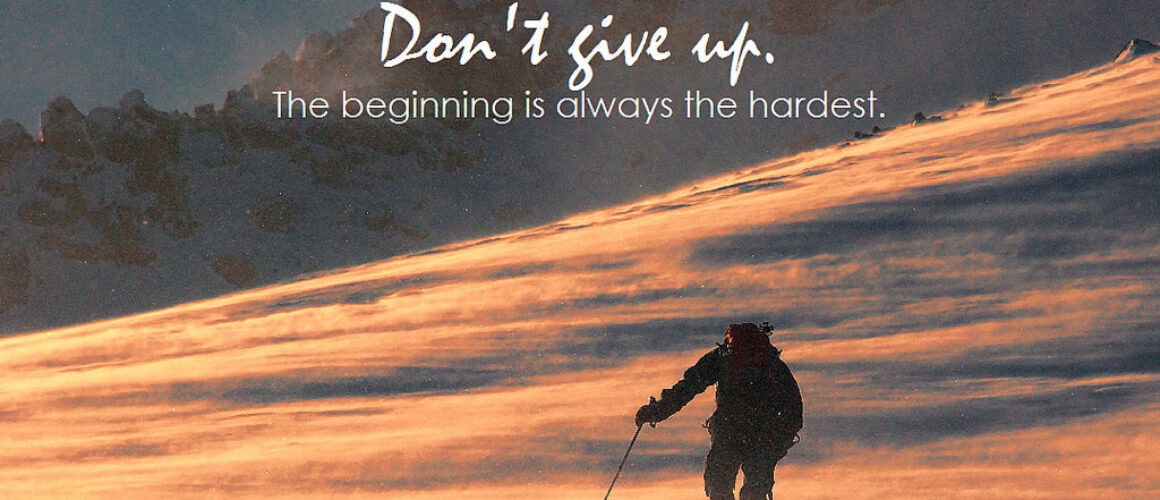I unplugged over Thanksgiving for the first time since I began this work nine years ago.
I suppose I could have done it before, but I was afraid.
There is an energy in the work. It propels you every day. What would happen if I stopped? What would I feel?
The first four days, I felt nothing. I was tired. I hadn’t had time to stop and really process any of it, how someone wired for the financial world had become this.
Just prior to the break, a man that I had worked for on the equity desk died. It triggered a flood of emotions. He was the Chief Equity Officer when I worked as a financial analyst on a team that managed billions in both hedge and mutual funds. He was a father, for sure, doting and caring for all of us as a dad would, but he was also a gamesman, a sharp shooter, angling in with precision. We worked hard, and we played hard. It was an amazing time to be in the financial world. Tech companies were taking off, it was a tsunami of IPOs as too many of them came public. It was exciting, rewarding, and the guys that I worked with are still friends today.
Being an analyst was black and white. We crunched numbers and analyzed data. There was no heart in it. No emotion. My intuition helped me read management teams, but that is about as sentimental as it got. I had designed my academic career for it, my life. I loved it.
In that moment, it suddenly contrasted with what my life had become.
The last five years have been a chapter that began with the publication of my book. Naively, I thought at the time, the book would do the trick and I could go back to the life I’d planned. “There it is,” I’d thought. “The research, the data, the work. It’s bound, backed up and defined for anyone who wants it. Now I am going to go back to what I’d planned to do…work in the investment world.”
But that didn’t happen. About 6 months after the launch of the book, a period in which I experienced both more love and more vitriol than we could have ever imagined, we felt the impact. It was life-changing. We were not wanted by the chemical industry. At the same time, we were embraced by so many. Everything was changing and changing fast, and my instinct was to run away. It was scary to be responsible for so much. It was even scarier to feel it.
So we made plans to do that. The house sold in three days. And one day, I was standing outside under a tree and looked ahead to what my life would be if I ran away. And I turned and went inside to my family and said, “I can’t go. I have to do this. I don’t know what will happen, how it will unfold, but if I run….” What I wanted to say, but the children were too little to hear it, was that it would do something to my soul. It would die on the inside.
It was not easy. Not for anyone that I loved. The decision was huge.
Looking back on that now, I realized that what I was running from was fear. Fear of the unknown, fear of criticism, fear of what might happen. I could not see what it could become. There were so few people involved at that point. But that day, my heart beat louder than the fear that was running through my head, and we stayed.
I needed a bigger team and decided to use the platform I had to lift up others. I could not build a movement without a team, and as others began to step forward, I shared their work. The team grew and so did the movement.
There have been people in this work that have forever changed my life. Some are academics, some brilliant business men, some funny, genius friends. They make me feel good when I see them. True friends are one of life’s greatest blessings. But perhaps one of the most pivotal is a friend who won the Ironman in Hawaii six times. He was the first inductee into the Ironman Hall of Fame.
He was an ally in the early years, connecting me with my first academic who had studied agriculture and genetically engineered crops back in 2006. But more than that, he was a coach. He had defied odds, eating a plant-based diet while others ridiculed. He was organic before anyone had a clue what it meant. And he calculated his food intake with the precision of a mathematician and scientist. Everything that he put in his body fueled his success. Each nutrient, protein, fat, carb had a purpose. It was fascinating to watch.
But what I really came to learn from him was that what you put in your head matters just as much as what you put in your mouth.
I’ve watched him coach triathletes and recently came upon a piece that he wrote about fear. As I read it, I thought about all of the fear and hurdles that had been in my head. How close I had been to talking myself out of this work so many times. Fear makes those obstacles seem real, insurmountable at times. What I had learned is that love makes them obsolete.
So in the hopes of inspiring others the way that Dave Scott inspired me, here are his thoughts on fear. I am tempted to edit it down, replacing the language that he uses about a race with language that applies to this work. But this work is as tough as any race, so use the lessons, learn them, condition yourself to them as you would any muscle, and put fear in its place.
The world needs your heart, your love and your courage. And this is our race to win.
4 Fears (from the article “Mental Preparation: Facing Your Fears”)
First off I’d like to talk about the four definable fears that we might all have. We might have one or multiple of these. The first one is the fear of the unknown. The second one is the fear of disappointment. The third is a fear of commitment. And the last one which we can lump together is the fear of failure or success.
1. Fear of the Unknown
The fear of unknown – the unknown part going into a race can be alleviated very, very easily if you do your homework. And what I mean by your homework is to know the race course in advance. Everything is online. You can look at it online, you can look at the course profile, you can get feedback from athletes over the last two, three or ten years depending on the history of the event so you can have a good understanding of that race, the nuances of the race, the hills, the windy sections, the real tough sections and you can ask other athletes they’re experiences. What’s even better is that when you arrive not only do you have this kind of mental road map but you also have the opportunity to actually drive the course or ride the course or pieces of that course, run the course and make sure that you’re doing all the segments of the swim. By doing this, you’ve taken out a huge amount of that unknown. It’s just like being on your home course. Races that I was able to repeat over the years certainly that made it easier. I knew the gearing, I knew there were windy sections in Kona when I was there for the Ironman race, and this allows you to relax, to be calm during the race and certainly to be calm beforehand.
The other thing that will really help is if you take that course and divide it up into segments (those segments may not be equidistant). In other words, on the bike – and I’ll come back to the Ironman in Kona – you would never divide 112 miles up into equal components but there are segments in the race and, for example, the first five miles on the bike has a lot of ups and downs and through the town and it‘s a very non-rhythmic part of the course. I’ve told all my athletes in preparation that rarely would anyone feel good on those sections but you have to control what you can control. So recognizing your plan that you’ve laid out and knowing the segments of the race, you can start breaking it down. Lastly, I’ve never thought of any race that I’ve done and backtracked in the miles. In other words when I raced Kona I didn’t say, “Gee, I’ve got two miles down on the bike, I’ve got a 110 to go.” That would be mental suicide. So again, breaking that course down into segments will really help as you go into the race.
2. Fear of Commitment
The second one is fear of commitment. With the fear of commitment, recognize the training plan that you’ve followed. I’ve never known an athlete who said “Oh I’ve followed my plan 100 percent, it’s been exactly right, I didn’t have any aberrations in there, never got a cold, never had a hamstring issue, or sore back.” We all have issues. There’s not an athlete alive who has not had to overcome obstacles to get where they are right now. When you look at your plan, go back and recognize what you have conquered in your plan. I use the word “conquered” because it’s really important when we look at how we’ve prepared for the race, everyone has these aberrations, everyone has the ups and downs, but we should see a trend where you’re improving and looking specifically at the last week to ten days of the great training days that you’ve had. In the second video I’ll give you an idea on how you can really extract the key elements on your commitment and your plan.
3. Fear of Disapproval
The third one is fear of disapproval and I think disapproval – disapproval of yourself, disapproval that your family is not going to be there for you – I think that’s a bunch of baloney. They’re always going to support you. They’ve supported you in your journey to get to where you are right now. We can be kind of crazy and manic about our training and preparation but they’re always there and they’re not going to let you down. And regardless of how you do they’re still going to be there. So don’t put the disappointment on yourself. I think if you look at the unknowns, you look at the commitment, the fear of disapproval should be erased.
4. Fear of Success or Failure
The last one is fear of success or fear of failure. I find about 70% of the athletes that I have dealt with from amateurs to pros have this real fine line. In other words, we have a short memory on what we’re trying to accomplish on a day-to-day basis. I might have a great ride or run on Sunday but four or five days later, I can be off my game and we think we’ve failed. I always remind them to think about what they have done and what they have accomplished. When we look at the fear of success or fear of failure, it’s important to recognize the stepping stones along the way and in the second video I’m going to suggest that you actually write down these little steps that you’ve recognized and take a look at the last few months. When you look at your training plan and you see these breakthrough days or breakthrough sessions. Part of it is the mental side that says “hey, you know what? I had a great day today.” And some of us share that with our partner or spouse or family and some of us are silent about it. And it really depends upon your wiring. You don’t have to be vociferous about always exclaiming you had the greatest training day in the world. I was quite quiet about it when I would train, but silently I used this as mental ammunition for the race. I recognized those little improvements that I had and was able to say “You know what? Dave, you had a great day today – you’re gonna be able to do this in the race.”
We are running the race of a lifetime. Fear less, and love more. It is our race to win.











